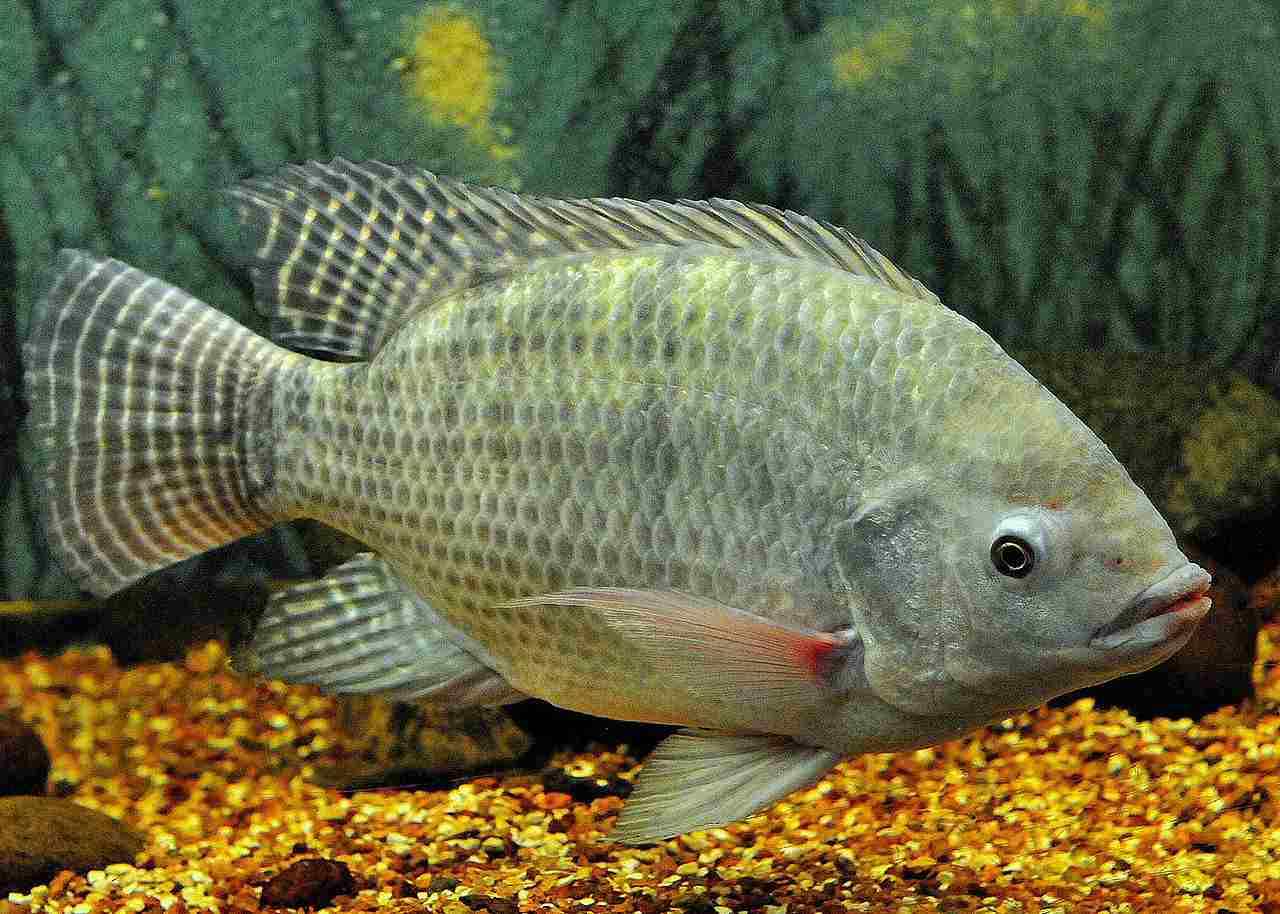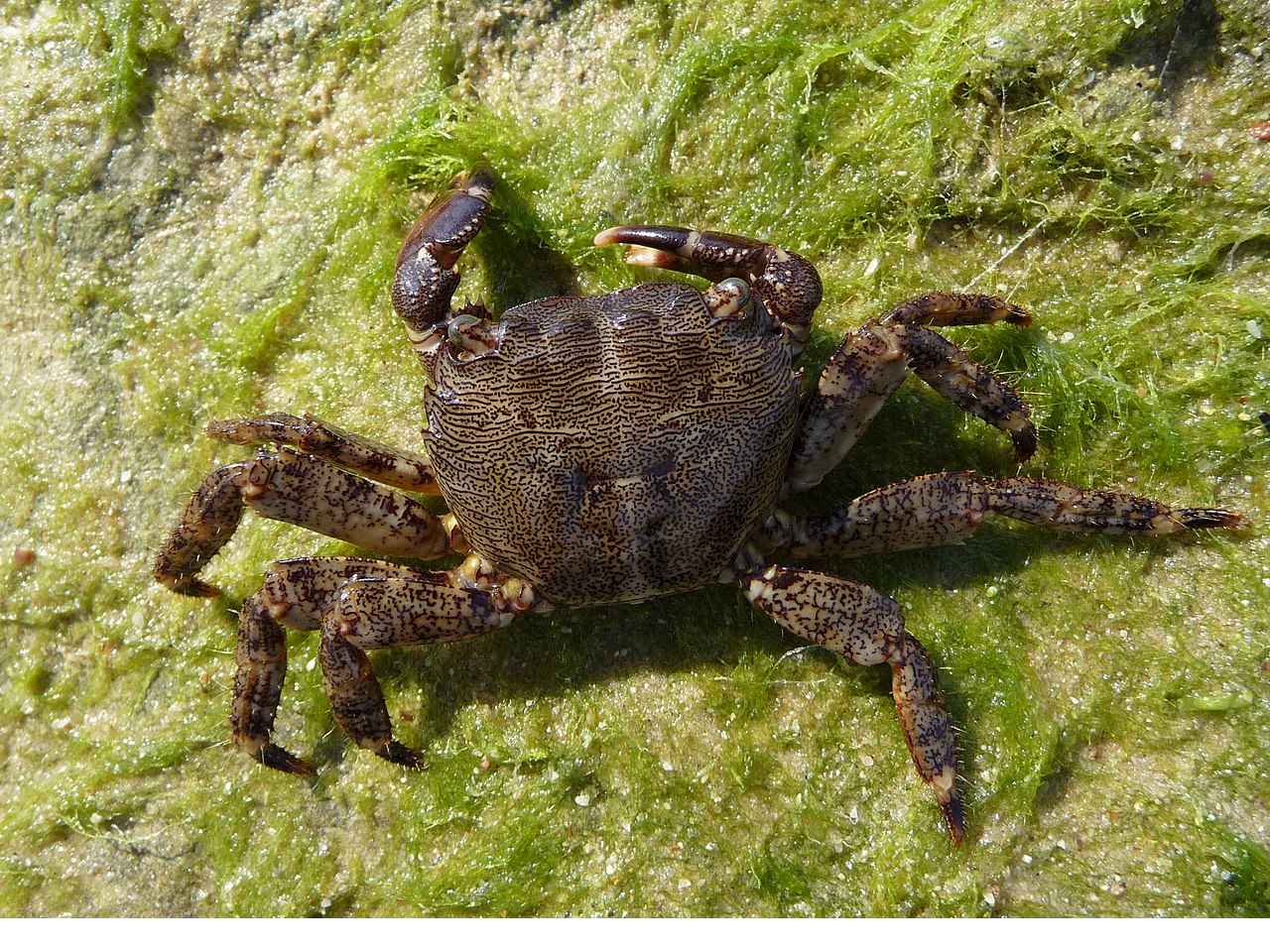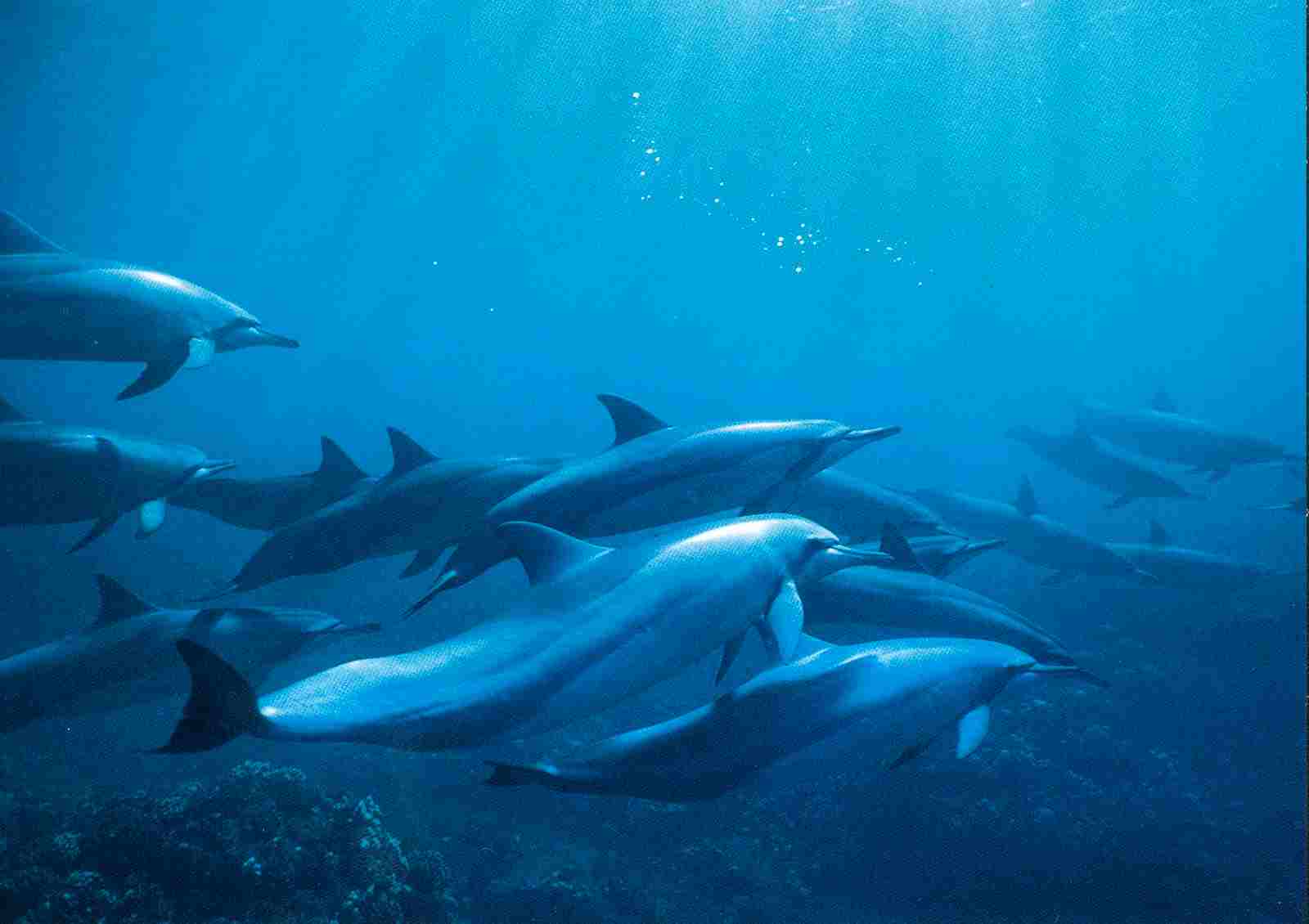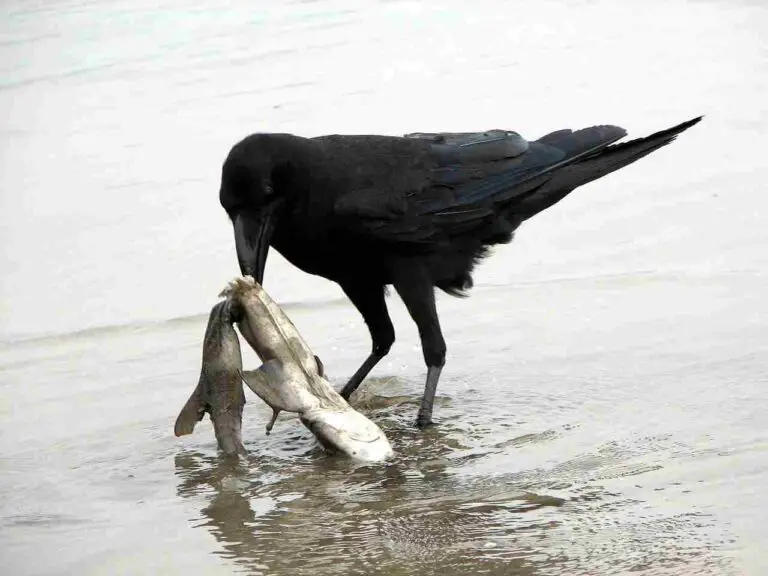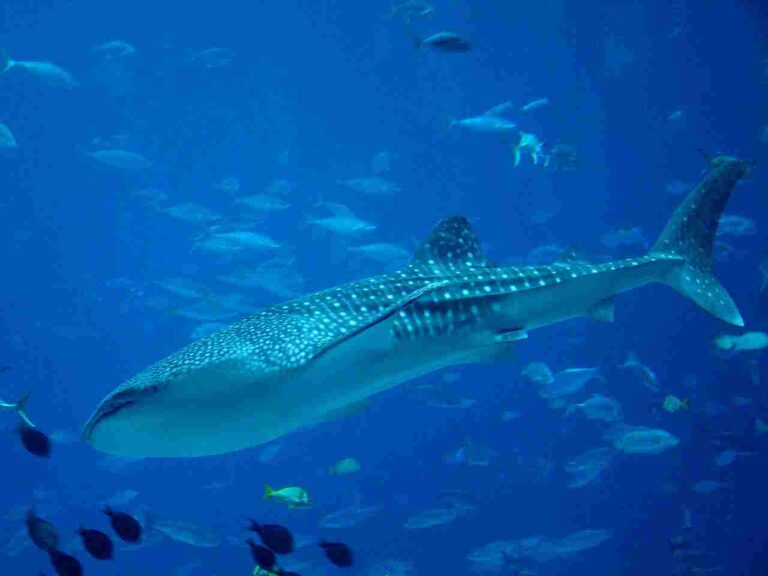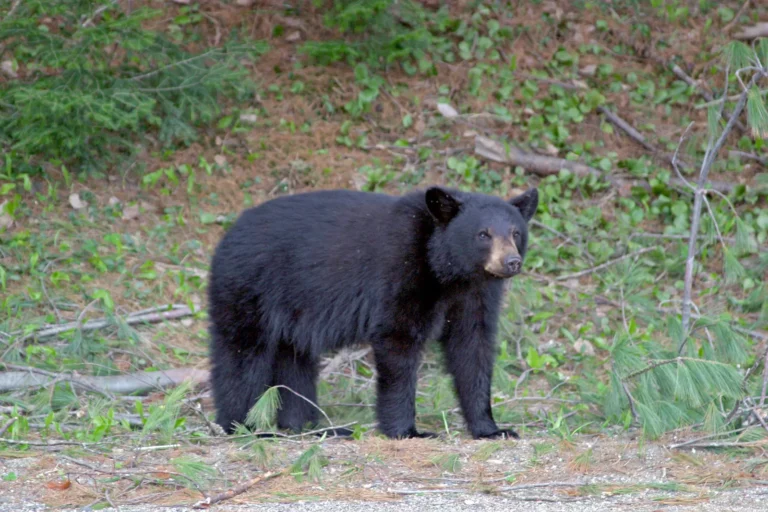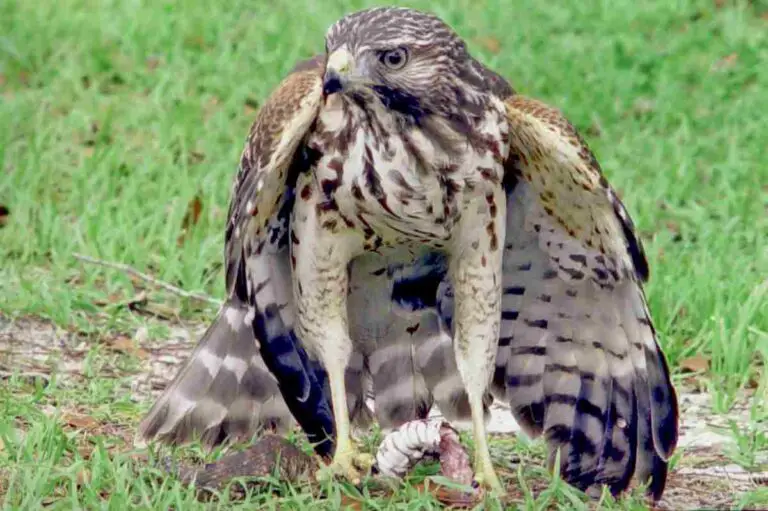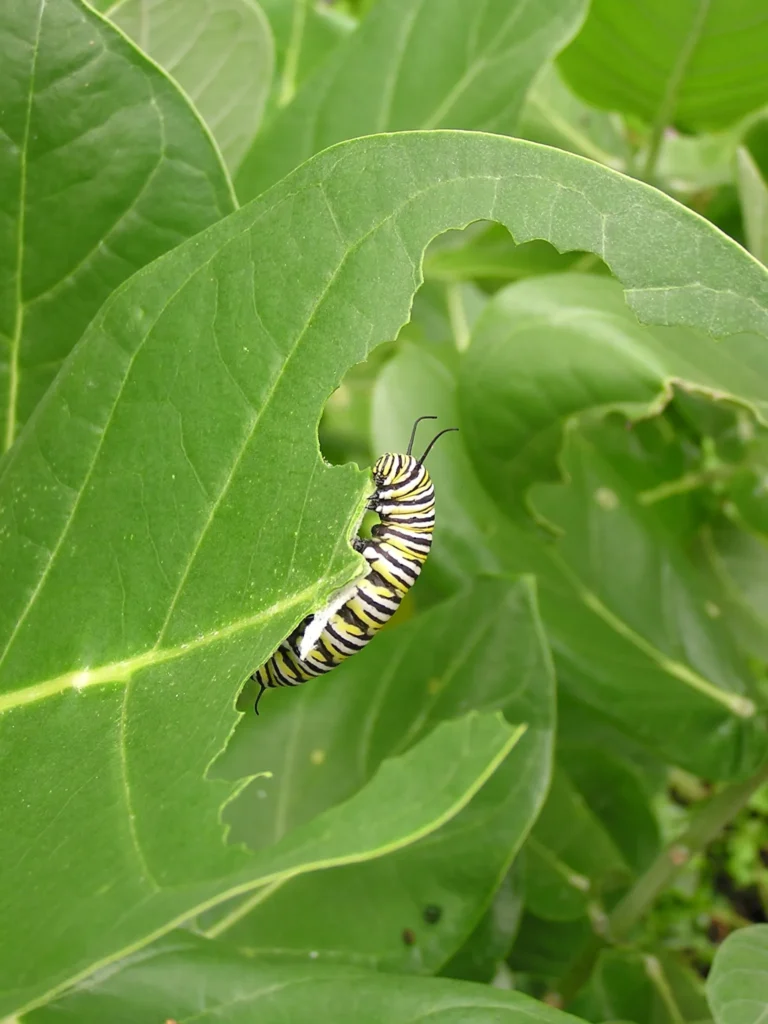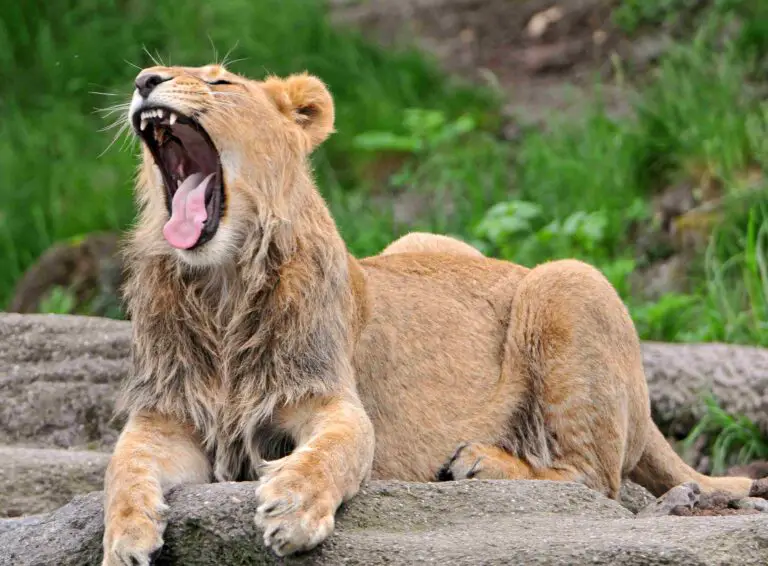Are Squid Carnivores? Assessing the Feeding Habits of Squid
Squid are classified as carnivores because they solely rely on animal biomass for energy and nutrients. They feed on a variety of marine organisms, including crustaceans, fish, and various mollusks such as bivalves, brachiopods, gastropods, and even other squid.
This predatory behavior is supported by their anatomical adaptations, such as their beak-like mouthparts and tentacles equipped with suckers and hooks. Squid are not herbivores or omnivores, as their diet does not include plant matter or a significant amount of both plant and animal material. Their consumption of other animals and non-reliance on producers for sustenance clearly demonstrate their carnivorous nature.
Why Squid are Classified as Carnivores
1). Predatory Adaptations
Squid possess a range of predatory adaptations that contribute to their classification as carnivores. These adaptations include their behavior, tentacles, and suckers, which enable them to capture and consume other animals.
One of the key predatory adaptations of squid is their behavior. Squid are highly skilled hunters, using their intelligence and agility to pursue and capture prey. They are known for their ability to swim swiftly and change direction rapidly, allowing them to chase down their prey with precision. This behavior is essential for their survival as carnivores, as it enables them to actively seek out and capture their food.
Another important predatory adaptation of squid is their tentacles. Squid have long, flexible tentacles that are equipped with numerous suckers. These suckers are lined with small, sharp teeth called denticles, which help the squid to grip and hold onto their prey. The tentacles can extend rapidly to ensnare their prey, and the suckers provide a strong grip, preventing the prey from escaping.
The suckers on the tentacles of squid are also equipped with sensory cells that allow them to detect chemical signals in the water. This enables the squid to locate potential prey, even in dark or murky conditions. Once the prey is detected, the squid can use its tentacles and suckers to capture and immobilize it, ensuring a successful hunt.
In addition to their behavior and tentacles, squid also have other predatory adaptations that contribute to their classification as carnivores. For example, they have a beak-like mouth that is capable of tearing and consuming flesh. This specialized mouth structure allows squid to efficiently consume other animals, further supporting their carnivorous diet.
2). Consumption of Other Animals
Another reason why squid are classified as carnivores is their consumption of other animals. Squid have a voracious appetite for a wide range of marine organisms, making them important predators in the ocean ecosystem.
Squid feed on a variety of prey, including fish, crustaceans, and other mollusks. Their predatory adaptations, such as their behavior, tentacles, and suckers, enable them to capture and consume these animals effectively. Squid are highly skilled hunters, using their intelligence and agility to pursue and capture their prey. Their ability to swim swiftly and change direction rapidly allows them to chase down their food with precision.
The long, flexible tentacles of squid play a crucial role in their consumption of other animals. Equipped with numerous suckers lined with sharp teeth called denticles, the tentacles can extend rapidly to ensnare their prey. The suckers provide a strong grip, preventing the prey from escaping. Additionally, the suckers on the tentacles have sensory cells that allow the squid to detect chemical signals in the water, helping them locate potential prey.
Once the prey is captured, squid use their beak-like mouth to tear and consume the flesh. This specialized mouth structure allows them to efficiently consume other animals, further supporting their classification as carnivores.
The consumption of other animals is a fundamental aspect of squid’s diet and survival. Their ability to prey on a diverse range of marine organisms contributes to the balance of the ocean ecosystem. By controlling the population of their prey, squid help maintain the ecological equilibrium and ensure the health of the marine environment.
3). Non-Reliance On Producers for Sustenance
Squid, unlike herbivores or omnivores, do not rely directly on producers like phytoplankton or seaweeds as their primary source of food. This characteristic sets them apart as obligate carnivores, reinforcing their classification as carnivorous creatures.
The absence of a dependence on producers for sustenance is a significant factor in understanding the feeding habits of squid. While herbivores and omnivores obtain energy and nutrients from plants and algae, squid have evolved to thrive on a diet consisting mainly of other animals. This adaptation is crucial for their survival in the marine ecosystem.
By not relying on producers, squid have developed specialized predatory adaptations that enable them to capture and consume other animals effectively. Their hunting skills, such as their behavior, tentacles, and suckers, have evolved to perfection. Squid are highly intelligent and agile hunters, utilizing their speed and maneuverability to pursue and capture their prey with precision.
The absence of reliance on producers is also evident in the structure and function of squid’s tentacles. Equipped with numerous suckers lined with sharp teeth called denticles, the tentacles play a vital role in capturing prey. These suckers provide a strong grip, preventing the prey from escaping, while also allowing the squid to detect chemical signals in the water, aiding in locating potential prey.
The fact that squid do not rely on producers for sustenance highlights their role as important predators in the ocean ecosystem. By preying on a diverse range of marine organisms, squid contribute to the balance of the food chain and help maintain the ecological equilibrium. Their classification as obligate carnivores reflects their unique feeding habits and the vital role they play in the marine environment.
Are Squid Herbivores?
Contrary to herbivores or primary consumers, squid do not graze on algae or gain energy and nutrients from producers of any kind, such as phytoplankton. Instead, they are classified as carnivores and can be considered secondary or tertiary consumers depending on their size and the species of other organisms in their habitat.
In the marine ecosystem, there are herbivorous mollusks like limpets that rely on plants and algae as their primary food source. However, squid have evolved to thrive on a diet consisting mainly of other animals. This specialization in consuming animal biomass sets them apart from herbivores and reinforces their classification as carnivorous creatures.
Squid’s feeding habits are not limited to a single type of prey. They are opportunistic predators that feed on a diverse range of marine organisms. Their diet includes crustaceans, bivalve mollusks, brachiopod mollusks, gastropod mollusks, cephalopod mollusks, and even fish. This wide variety of prey contributes to their role as important predators in the ocean ecosystem.
The fact that squid do not rely on producers for sustenance is a significant factor in understanding their feeding habits. By not depending on plants or algae, squid have developed specialized predatory adaptations that enable them to capture and consume other animals effectively. Their hunting skills, such as their behavior, tentacles, and suckers, have evolved to perfection. Squid are highly intelligent and agile hunters, utilizing their speed and maneuverability to pursue and capture their prey with precision.
The absence of reliance on producers is also evident in the structure and function of squid’s tentacles. Equipped with numerous suckers lined with sharp teeth called denticles, the tentacles play a vital role in capturing prey. These suckers provide a strong grip, preventing the prey from escaping, while also allowing the squid to detect chemical signals in the water, aiding in locating potential prey.
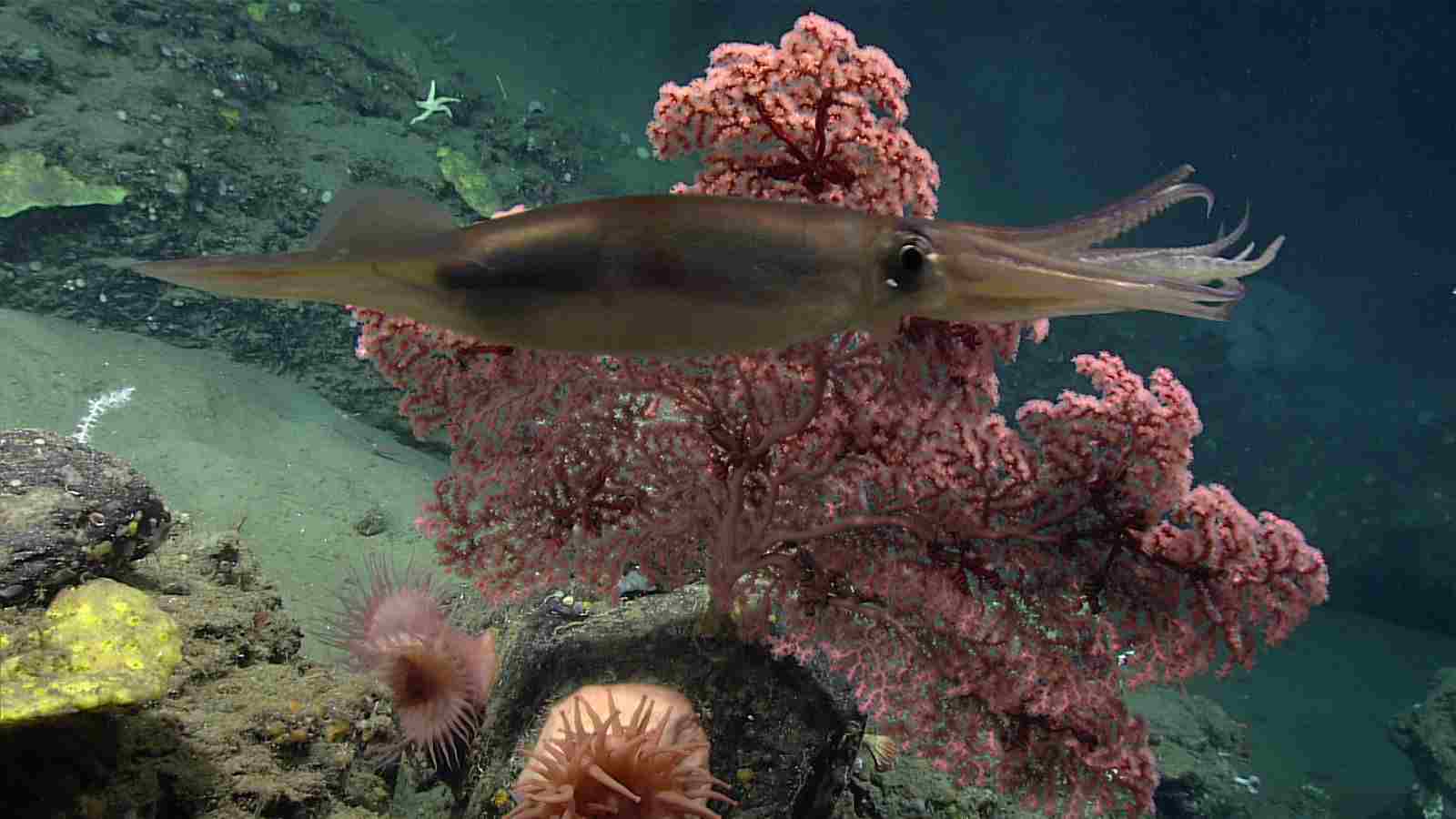
Are Squid Omnivores?
While squid are primarily classified as carnivores, they do exhibit some omnivorous tendencies throughout their life cycle. Unlike true omnivores, squid are not highly opportunistic in their feeding strategy and are not as versatile in their diet. However, they can be referred to as “lifecycle omnivores” because they consume both producers and other consumers at different stages of their life.
In the early stages of their life cycle, squid do feed on producers such as algae and marine plants. This is especially true for young squid that are still developing and growing. During this phase, they rely on the energy and nutrients provided by these plant-based sources. However, as they mature and reach adulthood, squid transition to a primarily carnivorous diet.
As adult squid, their diet becomes more specialized, consisting mainly of animal biomass. They feed on a wide range of marine organisms, including crustaceans, bivalve mollusks, brachiopod mollusks, gastropod mollusks, cephalopod mollusks, and even fish. This specialization in consuming animal prey sets them apart from true omnivores, as they primarily rely on other consumers for sustenance.
It is important to note that while squid may consume producers like seagrasses and algae in the early stages of their life cycle, they become obligate carnivores as they reach adulthood. This means that their diet is predominantly composed of other animals, and they have evolved specialized predatory adaptations to effectively capture and consume their prey.
Therefore, while squid are not considered true omnivores, they do exhibit some omnivorous behavior during their life cycle. They start off as larvae feeding on producers like algae and plants, but as they mature, they transition to a diet consisting mainly of animal biomass. This specialization in consuming other consumers reinforces their classification as carnivorous creatures.
What Do Squid Eat in the Ocean?
In the ocean, squid feed on crustaceans (including zooplankton), bivalves, brachiopods, gastropods. other cephalopods, fish, as well as smaller squid.
It must be noted that squid may feed on producers like seagrasses an algae in the early stage of their life cycle. They however become obligate carnivores in adulthood.
Examples of crustaceans which squid prey upon include; krill, shrimp, and crabs. Examples of fish that are consumed by squid include lantern fish and orange roughy. Below is a brief discussion of each major prey and food source of squid;
1). Algae
Algae is one of the primary food sources for squid in the ocean, particularly during their juvenile stage. Squid feed on various types of algae, including green, red, and brown algae. These marine plants provide essential nutrients and energy for the growing squid.
Squid are known to consume algae in the form of microscopic phytoplankton. These tiny plants float in the water and serve as a vital food source for many marine organisms. Squid use their specialized feeding structures, such as their beaks and radula, to filter and capture these microscopic algae.
The consumption of algae by squid is not only important for their growth and development but also for their overall survival. Algae provide essential vitamins, minerals, and fatty acids that are necessary for the squid’s health. Additionally, the high protein content of algae helps to support the squid’s rapid growth during their early life stages.
It is worth noting that as squid mature and reach adulthood, their diet shifts towards a more carnivorous nature. While they may still consume small amounts of algae, their primary food sources become other animals, such as crustaceans, fish, and other cephalopods.
2). Marine Plants
Marine plants play a crucial role in the diet of squid, especially during the early stages of their lifecycle. Squid rely on marine plants, including various types of algae, as a source of sustenance and essential nutrients. These plants provide the necessary energy for the growing squid and contribute to their overall development.
During their juvenile stage, squid consume marine plants in the form of microscopic phytoplankton. These tiny plants, floating in the water, serve as a vital food source for many marine organisms, including squid. Using their specialized feeding structures, such as their beaks and radula, squid filter and capture these microscopic algae.
The consumption of marine plants, particularly algae, is crucial for the squid’s growth, development, and survival. Algae offer a rich source of vitamins, minerals, and fatty acids that are essential for the squid’s health. Additionally, the high protein content of algae supports the rapid growth of squid during their early life stages.
As squid mature and reach adulthood, their diet gradually shifts towards a more carnivorous nature. While they may still consume small amounts of marine plants, their primary focus becomes other animals, such as crustaceans, fish, and other cephalopods.
3). Crustaceans
Crustaceans are a significant part of the diet of squid in the ocean. These small marine animals, including shrimp, crabs, and lobsters, provide a valuable source of sustenance for squid. Squid are highly skilled predators and have adapted their feeding strategies to capture and consume crustaceans efficiently.
Squid use their powerful tentacles and sharp beaks to seize and tear apart crustaceans. Their beaks are capable of crushing the hard exoskeletons of these animals, allowing them to access the nutrient-rich flesh inside. Squid are also equipped with specialized feeding structures, such as their radula, which helps them scrape and consume the soft tissues of crustaceans.
The consumption of crustaceans is essential for the squid’s growth and development. These marine animals are rich in protein, which is crucial for the squid’s muscle development and overall body condition. Crustaceans also provide essential vitamins and minerals that contribute to the squid’s overall health and well-being.
Some common crustaceans that are part of the squid’s diet include krill, a small shrimp-like creature, and various species of small crabs. These crustaceans are abundant in the ocean and serve as a reliable food source for squid. Squid are highly opportunistic feeders and will consume crustaceans whenever they are available.
In addition to being a nutritious food source, the consumption of crustaceans also plays a role in the ecological balance of the marine ecosystem. Squid help regulate the population of crustaceans, preventing them from becoming overpopulated and maintaining a healthy balance within the food web.
4). Bivalve Mollusks
Bivalve mollusks are another important component of the squid’s diet in the ocean. These mollusks, which include clams, mussels, and oysters, provide a valuable source of nutrition for squid. With their specialized feeding adaptations, squid are able to efficiently capture and consume bivalve mollusks.
Squid use their tentacles to grasp onto the shells of bivalve mollusks, exerting enough force to pry them open. Once the shell is open, squid use their beaks to extract the soft flesh inside. The beaks of squid are sharp and powerful, allowing them to break through the protective shells of bivalve mollusks and access the nutrient-rich meat within.
Bivalve mollusks are a rich source of protein for squid, which is essential for their growth and development. They also contain important minerals and vitamins that contribute to the overall health and vitality of squid. The consumption of bivalve mollusks ensures that squid have a well-rounded diet that meets their nutritional needs.
Clams, mussels, and oysters are commonly found in coastal areas and provide a reliable food source for squid. Squid are opportunistic feeders and will take advantage of bivalve mollusks whenever they are available. The abundance of bivalve mollusks in certain regions makes them an important prey item for squid, contributing to their survival and population dynamics.
The predation of bivalve mollusks by squid also has ecological implications. Squid help regulate the population of bivalve mollusks, preventing them from overpopulating and potentially causing imbalances in the ecosystem. By consuming bivalve mollusks, squid play a role in maintaining the health and diversity of the marine environment.
5). Brachiopod Mollusks
Brachiopod mollusks are another important prey item for squid in the ocean. These unique mollusks, which resemble clams but are not closely related, provide a valuable source of sustenance for squid. With their specialized feeding adaptations, squid are able to efficiently capture and consume brachiopod mollusks.
Squid use their tentacles to ensnare the shells of brachiopod mollusks, exerting just the right amount of force to immobilize them. Once the mollusk is captured, squid use their beaks to puncture the protective shell and access the nutrient-rich flesh inside. The beaks of squid are perfectly designed for this task, allowing them to break through the tough exterior of brachiopod mollusks.
Brachiopod mollusks offer a diverse range of nutrients for squid. They are a rich source of protein, which is essential for the growth and development of squid. Additionally, brachiopod mollusks contain important minerals and vitamins that contribute to the overall health and vitality of squid. By including brachiopod mollusks in their diet, squid ensure they have a well-rounded and nutritious meal.
These mollusks are commonly found in various marine habitats, including both shallow and deep waters. Squid are opportunistic feeders and will take advantage of brachiopod mollusks whenever they are available. The abundance of brachiopod mollusks in certain regions makes them an important food source for squid, supporting their survival and population dynamics.
The predation of brachiopod mollusks by squid also plays a role in the ecological balance of the marine environment. Squid help regulate the population of brachiopod mollusks, preventing them from overpopulating and potentially causing imbalances in the ecosystem. By consuming brachiopod mollusks, squid contribute to the overall health and diversity of the marine ecosystem.
6). Gastropod Mollusks
Gastropod mollusks are another important prey item for squid in the ocean. These mollusks, which include snails and slugs, provide a valuable source of sustenance for squid. With their specialized feeding adaptations, squid are able to efficiently capture and consume gastropod mollusks.
Squid use their tentacles to capture gastropod mollusks, which they find in various marine habitats. The tentacles are equipped with suction cups that allow squid to firmly grasp onto the shells of gastropods. Once captured, squid use their beaks to break through the protective shell and access the soft body inside. The beaks of squid are perfectly designed for this task, allowing them to penetrate the tough exterior of gastropod mollusks.
Gastropod mollusks offer a diverse range of nutrients for squid. They are a rich source of protein, which is essential for the growth and development of squid. Additionally, gastropod mollusks contain important minerals and vitamins that contribute to the overall health and vitality of squid. By including gastropod mollusks in their diet, squid ensure they have a well-rounded and nutritious meal.
These mollusks are commonly found in various marine habitats, including rocky shores, coral reefs, and sandy bottoms. Squid are opportunistic feeders and will take advantage of gastropod mollusks whenever they are available. The abundance of gastropod mollusks in certain regions makes them an important food source for squid, supporting their survival and population dynamics.
The predation of gastropod mollusks by squid also plays a role in the ecological balance of the marine environment. Squid help regulate the population of gastropod mollusks, preventing them from overpopulating and potentially causing imbalances in the ecosystem. By consuming gastropod mollusks, squid contribute to the overall health and diversity of the marine ecosystem.
7). Cephalopod Mollusks
Cephalopod mollusks, including other squid, are a significant part of the diet of squid in the ocean. Squid are known to be cannibalistic, and they will not hesitate to prey on other squid if the opportunity arises. This cannibalistic behavior is not limited to squid but extends to other organisms as well.
In addition to consuming other squid, cephalopod mollusks are also a common prey item for squid. Squid have specialized feeding adaptations that allow them to capture and consume cephalopod mollusks effectively. With their agile bodies and powerful tentacles, squid are able to swiftly capture their prey.
Once captured, squid use their beaks to break through the tough exterior of cephalopod mollusks and access the soft flesh inside. The beaks of squid are sharp and strong, enabling them to tear through the bodies of their prey. Cephalopod mollusks provide squid with a rich source of protein and other essential nutrients, supporting their growth and development.
Squid can find cephalopod mollusks in various marine habitats, including deep-sea environments and coastal areas. These mollusks are an important food source for squid, contributing to their survival and overall health. By including cephalopod mollusks in their diet, squid ensure they have a diverse and balanced meal.
The consumption of cephalopod mollusks by squid also plays a role in the ecological balance of the marine ecosystem. Squid help regulate the population of cephalopod mollusks, preventing them from overpopulating and potentially causing imbalances in the ecosystem. This predation relationship contributes to the overall health and stability of the marine environment.
8). Fish
Squid have a diverse diet that includes a variety of marine organisms, and fish are among the prey items that they consume in the ocean. Fish provide squid with a source of protein and essential nutrients, supporting their growth and overall health. Squid are opportunistic feeders and will prey on a range of fish species, including crustaceans, crabs, shrimp, orange roughy, hokie, oysters, lantern fish, and smaller squid.
One of the reasons why fish are an important part of the squid’s diet is their abundance in the ocean. Fish are widely distributed in marine habitats, making them readily available as a food source for squid. Squid have developed specialized predatory adaptations that allow them to capture and consume fish effectively. With their agile bodies and powerful tentacles, squid are able to swiftly capture their fish prey.
Once captured, squid use their beaks to tear through the bodies of fish and access the nutrient-rich flesh inside. The beaks of squid are sharp and strong, enabling them to break through the tough exterior of fish. Squid are known to be cannibals, and they will not hesitate to prey on smaller squid if the opportunity arises. This cannibalistic behavior ensures that squid have a diverse and balanced diet.
The consumption of fish by squid also plays a role in the ecological balance of the marine ecosystem. Squid help regulate the population of fish species, preventing them from overpopulating and potentially causing imbalances in the ecosystem. This predation relationship contributes to the overall health and stability of the marine environment.
What Eats Squid?
Squid, despite being skilled predators themselves, are not exempt from being preyed upon by other marine creatures. Several species consider squid as a delectable meal, including sharks, seabirds, seals, whales, and smaller predatory fish. These natural predators play a crucial role in the ecological balance of the ocean ecosystem.
Sharks, with their powerful jaws and sharp teeth, are formidable predators that can easily overpower squid. They are known to feed on squid, particularly larger species such as the giant squid. Seabirds, such as albatrosses and gulls, are also known to target squid as part of their diet. These birds have sharp beaks that allow them to snatch squid from the water’s surface or dive down to catch them.
Seals, with their agility and speed, are skilled hunters that can chase down squid in the water. They have been observed preying on squid, especially in coastal areas where squid populations are abundant. Whales, including species like sperm whales and humpback whales, are known to consume squid as well. These massive marine mammals have specialized feeding techniques that enable them to engulf large quantities of squid in a single gulp.
In addition to these larger predators, smaller predatory fish also pose a threat to squid, particularly the juvenile ones. Fish such as tuna, mackerel, and barracuda are known to prey on squid, taking advantage of their smaller size and vulnerability. These fish have sharp teeth and swift swimming abilities, allowing them to catch and consume squid efficiently.
The predation of squid by these various marine creatures is an essential part of the food chain in the ocean. It helps regulate the population of squid, preventing them from becoming too abundant and potentially disrupting the balance of the ecosystem. Furthermore, the consumption of squid by these predators ensures that the energy and nutrients contained within the squid are transferred to higher trophic levels in the food web.
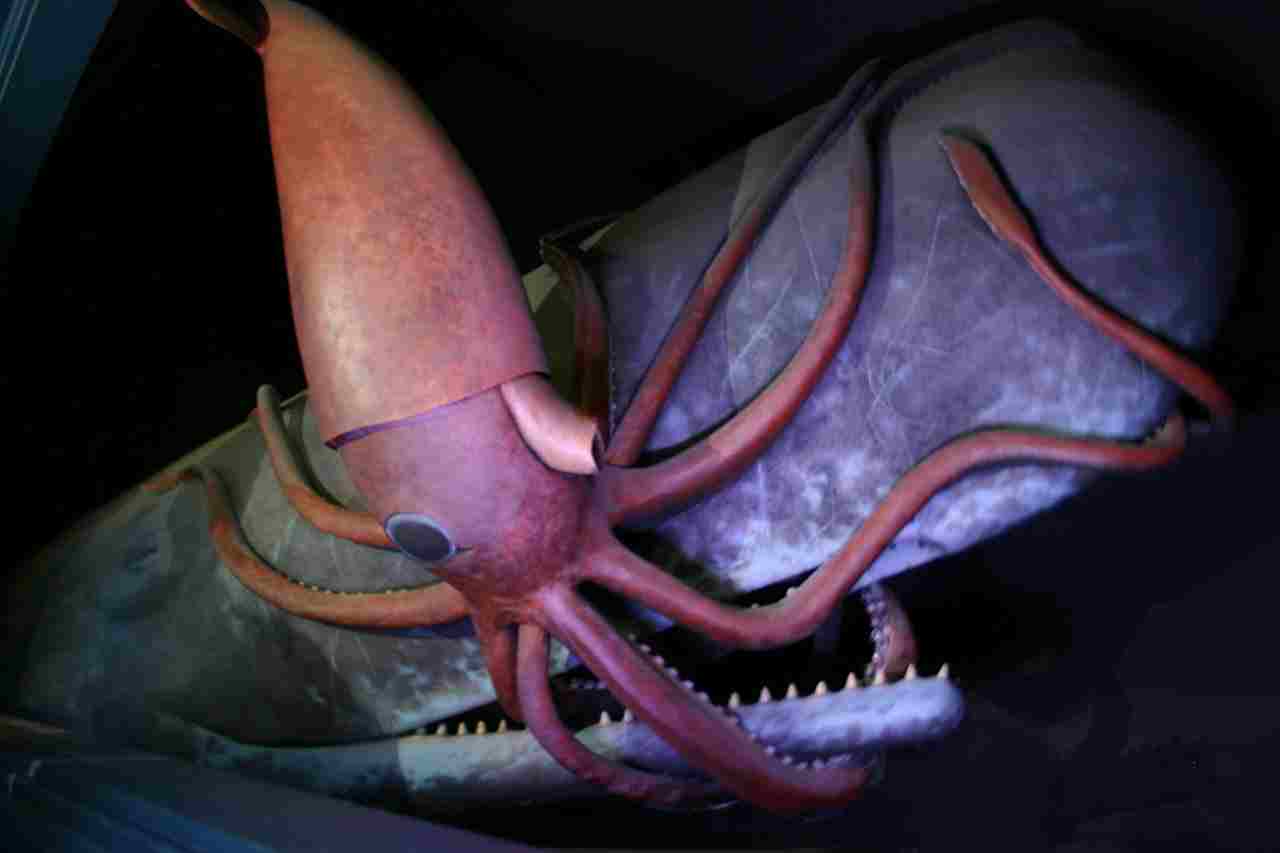
Conclusion
* Squid, with their predatory adaptations and consumption of other animals, are classified as carnivores. They do not rely on producers for sustenance, further supporting their carnivorous nature.
* Despite some speculation, squid are not herbivores. Their feeding habits and digestive systems are not designed to process plant matter.
* While squid are not considered omnivores, they do have a diverse diet that includes a variety of marine organisms such as algae, marine plants, crustaceans, bivalve mollusks, brachiopod mollusks, gastropod mollusks, cephalopod mollusks, and fish.
* Squid, despite being skilled predators themselves, are also preyed upon by other marine creatures such as sharks, seabirds, seals, whales, and smaller predatory fish. These natural predators play a crucial role in the ecological balance of the ocean ecosystem.
FAQs
1. Are Squid Carnivores or Herbivores?
Squid are carnivores, meaning they primarily eat other animals. They have a diet that consists mainly of fish, crustaceans, and other small marine creatures. Squid are highly skilled hunters, using their tentacles and sharp beaks to capture and consume their prey. They are known for their ability to swim quickly and catch their food with precision.
Squid have a voracious appetite and can consume large quantities of food in a short amount of time. Their carnivorous nature is essential for their survival and plays a crucial role in the marine food chain.
2. Does Squid Eat Other Animals?
Squid are indeed carnivorous creatures that have a diet consisting of other animals in the ocean. They are skilled predators that feed on a variety of marine life, including fish and crustaceans. With their tentacles and sharp beaks, squid are able to capture and consume their prey with precision. Their voracious appetite allows them to consume large quantities of food in a short amount of time, making them efficient hunters in the marine ecosystem.
Squid play a crucial role in the food chain, as their carnivorous nature helps maintain the balance of the oceanic ecosystem. By feeding on other animals, squid contribute to the regulation of populations and the overall health of the marine environment. Their ability to hunt and consume other animals is essential for their survival and ensures their place as top predators in the ocean.
3. Can a Squid Swallow a Fish?
Squid, with their impressive hunting abilities, are capable of swallowing fish whole. Their unique anatomy allows them to capture and consume their prey efficiently. With their powerful tentacles and sharp beaks, squid can seize fish and bring them towards their mouth. Once the fish is within reach, the squid’s muscular throat contracts, enabling it to swallow the fish whole. This ability to engulf their prey is essential for squid to obtain the necessary nutrients for survival.
The process of swallowing a fish is facilitated by the squid’s flexible body and expandable stomach. Squid have the remarkable ability to stretch their bodies to accommodate larger prey. This flexibility allows them to consume fish that are larger than their own size. By swallowing fish whole, squid can efficiently extract the maximum amount of nutrients from their prey.
4. Are Squid Carnivores?
Squid are indeed carnivores, meaning they primarily feed on other animals. Their diet consists mainly of fish, crustaceans, and other small marine creatures. Squid have evolved to be efficient predators, using their tentacles and sharp beaks to capture and consume their prey. They are skilled hunters, capable of quickly seizing their target and bringing it towards their mouth.
The carnivorous nature of squid is essential for their survival. By consuming other animals, they obtain the necessary nutrients and energy to thrive in their marine environment. Squid have adapted to their predatory lifestyle with specialized anatomical features, such as their powerful tentacles and beaks, which allow them to effectively catch and consume their prey.
5. Are Squid Carnivores or Omnivores?
Squid are strictly carnivores, not opportunistic omnivores. They have a specialized diet that consists solely of other animals. Squid primarily feed on fish, crustaceans, and other small marine creatures. Their carnivorous nature is evident in their hunting techniques and anatomical adaptations. Squid use their tentacles and sharp beaks to capture and consume their prey, showcasing their predatory instincts.
Unlike omnivores, squid do not consume plant matter or other non-animal sources of food. Their diet is exclusively focused on obtaining the necessary nutrients and energy from animal sources. This specialization as carnivores allows squid to thrive in their marine environment and maintain their predatory lifestyle. By honing their hunting skills and relying on their carnivorous instincts, squid have become efficient and successful predators in the ocean.
6. Are Squid Carnivores in the Ocean?
Yes, squid are carnivores in the ocean. They have a voracious appetite for other marine creatures, making them top predators in their ecosystem. Squid primarily feed on fish, crustaceans, and other small animals that inhabit the ocean. Their diet consists exclusively of animal sources, as they do not consume plant matter or other non-animal food.
Squid’s carnivorous nature is evident in their hunting techniques and anatomical adaptations. With their long tentacles and sharp beaks, they are skilled predators that capture and consume their prey with precision. These adaptations allow squid to efficiently hunt and thrive in their marine environment.
By being carnivores, squid play a crucial role in the ocean food chain. They help regulate the population of their prey species and contribute to the overall balance of the ecosystem.
7. How Many Arms Does a Squid Have?
Squids are fascinating creatures with unique anatomical features, including their arms. A squid has a total of eight arms, which are used for various purposes. These arms are lined with suckers, allowing the squid to grasp and manipulate objects in its environment.
Out of the eight arms, two are longer and thicker than the rest. These specialized arms, known as tentacles, are used for capturing prey. The tentacles have elongated suckers that help the squid secure its prey and bring it closer to its beak for consumption.
The remaining six arms, known as arms II and III, are shorter and used for additional tasks such as locomotion and sensory perception. These arms are equipped with suckers as well, but they are not as elongated or specialized as the tentacles.
The arms of a squid are incredibly flexible and agile, allowing them to move with precision and dexterity. This flexibility is essential for the squid’s hunting strategies and defense mechanisms. Squids can rapidly extend and retract their arms, making them formidable predators in the ocean.
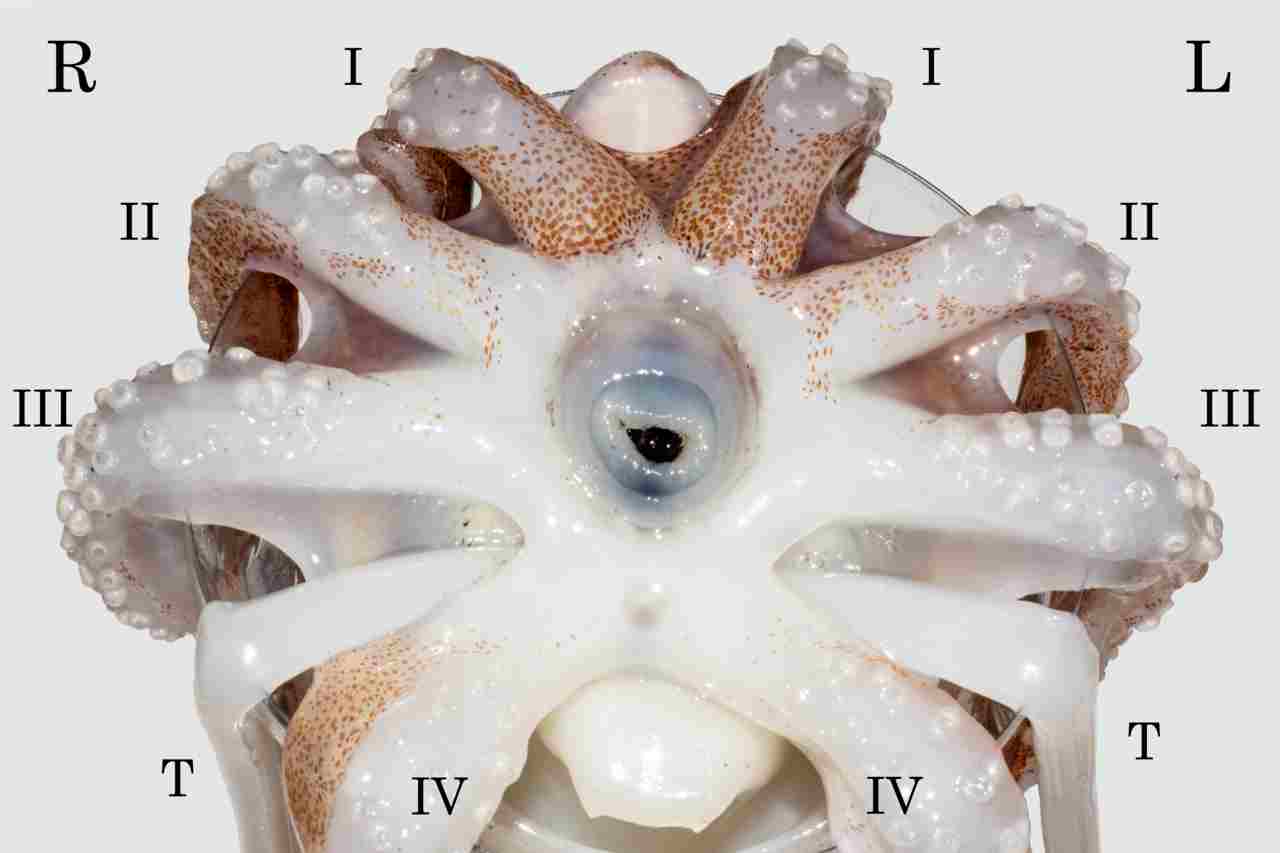
8. Does a Squid Eat Meat?
Yes, squids are carnivorous creatures that primarily feed on meat. Their diet consists mainly of animal biomass, including fish, crustaceans, and other small marine organisms. Squids are skilled hunters and use their specialized arms and tentacles to capture and secure their prey.
With their elongated suckers, squids can quickly grasp and immobilize their prey, bringing it closer to their beak for consumption. They have a voracious appetite and are known to consume large quantities of food to sustain their energy levels.
Squids are active predators in the ocean, constantly on the lookout for their next meal. Their ability to swiftly move and maneuver in the water allows them to chase down and capture their prey effectively.
9. Are Squid Herbivores in the Ocean?
No, squid are not herbivores in the ocean. Unlike parrotfish and other herbivorous marine creatures, squid are carnivores. They have a diet that primarily consists of meat, including fish, crustaceans, and other small marine organisms. Squid are skilled hunters and use their specialized arms and tentacles to capture and secure their prey.
Their elongated suckers allow them to quickly grasp and immobilize their prey, bringing it closer to their beak for consumption. Squid have a voracious appetite and consume large quantities of food to sustain their energy levels. They are active predators in the ocean, constantly on the lookout for their next meal.
10. What is a Squid’s Favorite Food?
A squid’s favorite food consists of a variety of invertebrates, such as snails, mussels, and clams. These small marine organisms make up a significant portion of a squid’s diet. Squid are skilled hunters and use their specialized arms and tentacles to capture their prey. They have elongated suckers that allow them to quickly grasp and immobilize their favorite food, bringing it closer to their beak for consumption.
Squid have a voracious appetite and consume large quantities of their preferred invertebrates to sustain their energy levels. Their ability to locate and capture their favorite food sources is crucial for their survival in the ocean.
11. How does a Squid Eat its Prey?
A squid’s feeding process is fascinating and efficient. When a squid spots its prey, it swiftly propels itself towards it using jet propulsion. Once close enough, the squid extends its tentacles, which are equipped with powerful suckers. These suckers latch onto the prey, ensuring a secure grip.
Using its beak, the squid tears into the captured prey, breaking it down into smaller, more manageable pieces. The beak acts as a powerful cutting tool, allowing the squid to consume its meal with ease.
To aid in digestion, a squid secretes enzymes into its mouth, which begin breaking down the prey’s tissues. The partially digested food then passes through the squid’s esophagus and into its stomach for further digestion.
This efficient feeding process allows squids to quickly consume their prey and obtain the necessary nutrients for survival.
12. Does a Squid Eat Seaweed?
Seaweed is not a typical part of a squid’s diet. Squids are primarily carnivorous, meaning they mainly consume other animals. Seaweed, on the other hand, is a type of marine algae and falls under the category of producers in the food chain.
During their juvenile stage, some squid species may consume small amounts of seaweed. However, as they grow and mature, their diet shifts towards a more carnivorous nature. Squids are known to feed on a variety of prey, including fish, crustaceans, and other cephalopods.
Their hunting techniques and specialized feeding apparatus, such as their beak and tentacles equipped with suckers, are designed for capturing and consuming animal prey. Squids have a highly efficient feeding process, allowing them to tear into their captured prey and consume it with ease.
While squids may not typically eat seaweed, they play an important role in the marine ecosystem as predators. By controlling the population of other marine organisms, squids help maintain the balance of the food chain and contribute to the overall health of the ocean.
13. What Type of Fish Do Squid Eat?
Squids have a diverse diet and consume a variety of fish species. One type of fish that squids eat is the orange roughy. Orange roughy is a deep-sea fish found in cold waters, and it is known for its bright orange color and delicate flavor. Squids are skilled hunters and use their tentacles and suckers to capture and subdue their prey.
They are opportunistic feeders and will target any fish that is within their reach, including orange roughy. Squids are attracted to the movement and vibrations of their prey, making them efficient predators in the ocean. By consuming fish like orange roughy, squids play a crucial role in maintaining the balance of the marine ecosystem. Their feeding habits contribute to the overall health and stability of the food chain.
14. Do Squid Eat Jellyfish?
Squid are known to be opportunistic feeders, and this extends to their diet of jellyfish. Yes, squid do eat jellyfish, especially the smaller ones. Jellyfish are a common prey item for squid, as they are abundant in the ocean and provide a good source of nutrition. Squid have specialized feeding structures, such as beaks and radulas, which allow them to consume jellyfish efficiently.
Jellyfish are composed mostly of water, but they also contain protein and other nutrients that squid need to survive. Squid use their tentacles and suckers to capture and immobilize jellyfish before consuming them. They are attracted to the movement and pulsations of jellyfish, making them skilled hunters in the ocean.
By consuming jellyfish, squid play an important role in controlling jellyfish populations and maintaining the balance of the marine ecosystem. Squid are part of the natural food chain, and their predation on jellyfish helps to prevent jellyfish blooms and their potential negative impacts on other marine organisms.
15. Do Squid Eat Plankton?
Squid are known to consume plankton, both as juveniles and adults. Juvenile squid feed on phytoplankton and zooplankton, which are small organisms that float in the water. These tiny organisms serve as a vital food source for young squid, providing them with the necessary nutrients for growth and development.
As squid mature, they continue to feed on zooplankton, including small crustaceans like krill. These small creatures are abundant in the ocean and are an important part of the squid’s diet. Squid have specialized feeding structures, such as beaks and radulas, which allow them to capture and consume these tiny organisms efficiently.
16. What Do Squid Eat in Antarctica?
Squid play a crucial role in the Antarctic food web, and their diet consists of various organisms found in this icy region. In Antarctica, squid primarily feed on krill, a small shrimp-like crustacean that forms the foundation of the food chain. Krill is abundant in the Southern Ocean and serves as a vital food source for many marine species, including squid.
Additionally, squid in Antarctica also consume small fish, such as Antarctic silverfish and lanternfish, which are part of their diet. These fish species are well-adapted to the cold waters and provide a source of protein and nutrients for the squid. By feeding on krill and small fish, squid contribute to the transfer of energy and nutrients within the Antarctic ecosystem, playing a crucial role in maintaining the delicate balance of this unique environment.
17. What Do Giant Squid Eat?
Giant squid, known for their enormous size and elusive nature, have a diet that consists mainly of other marine creatures. These colossal cephalopods are carnivorous predators, feeding on a variety of prey in the deep ocean.
One of the primary food sources for giant squid is fish. They have been observed preying on species such as herring, mackerel, and even smaller squid. These fish provide the giant squid with a rich source of protein and nutrients necessary for their survival and growth.
In addition to fish, giant squid also feed on other cephalopods, including smaller squid and octopus. These encounters between giant squid and their smaller relatives are rare but have been documented through the examination of their stomach contents.
While the exact diet of giant squid is still not fully understood due to their elusive nature, it is believed that they are opportunistic feeders, taking advantage of any available food source in their deep-sea habitat.
18. Do Squid Eat Krill?
Squid are known to be opportunistic feeders, consuming a wide range of prey in their ocean habitat. One of the primary food sources for squid is krill. Krill are small, shrimp-like crustaceans that form a crucial part of the marine food chain. Squid are attracted to the abundance of krill due to their high nutritional value.
Krill provide squid with a rich source of protein and essential nutrients. Squid use their tentacles and powerful beak to capture and consume krill. They are agile hunters, capable of swiftly capturing their prey in the water column.
In addition to krill, squid also feed on other small fish, crustaceans, and even other squid. Their diverse diet allows them to adapt to different food sources depending on availability.
19. What is the Squid Food Chain?
The squid occupies an important position in the marine food chain, acting as a secondary or tertiary consumer. As a predator, the squid feeds on a variety of organisms, including smaller fish, crustaceans, and even other squid. This makes the squid an integral part of the ocean ecosystem.
In the squid food chain, the squid itself is the primary consumer, feeding on smaller organisms. However, the squid is also preyed upon by larger predators such as sharks, dolphins, and even some species of whales. This places the squid as an important link in the food chain, transferring energy from lower trophic levels to higher ones.
20. Do Octopus Eat Squid?
Octopuses are known to be voracious predators, and they do indeed eat squid. In fact, squid are a common part of an octopus’s diet. Octopuses have a diverse diet that includes various marine animals, and squid are often on the menu.
Octopuses are highly intelligent creatures with a range of hunting strategies. They have powerful suckers on their tentacles that they use to capture and hold onto their prey. When it comes to squid, octopuses are known to target smaller ones. They use their agility and camouflage abilities to sneak up on their prey and quickly grab them with their tentacles.
Squid are not the only prey of octopuses, as they also feed on fish, crustaceans, and other marine organisms. However, squid are a particularly important part of their diet due to their abundance in the ocean.
21. What Eats Squid in Antarctica?
In the frigid waters of Antarctica, squid play a vital role in the marine food chain. They are a primary food source for several predators in this region. One of the main predators of squid in Antarctica is the colossal squid. These massive creatures, known for their enormous size and powerful tentacles, feed on smaller squid as part of their diet.
Another predator that preys on squid in Antarctica is the Antarctic toothfish. These large predatory fish have sharp teeth and are known to feed on squid, among other marine organisms. Additionally, several species of seals, such as leopard seals and Weddell seals, also consume squid as part of their diet.
The abundance of squid in the waters of Antarctica makes them an important food source for many marine animals, ensuring the survival and balance of the ecosystem in this icy region.
22. What Eats Giant Squid?
One of the main predators of giant squid is the sperm whale. These enormous marine mammals have been known to hunt and consume giant squid, using their powerful jaws and teeth to tear through the squid’s tough flesh.
Another predator of giant squid is the colossal squid. While giant squid are known to prey on smaller squid, the colossal squid is a larger and more powerful predator that can overpower and feed on giant squid.
23. Do Orcas Eat Squid?
Orcas, also known as killer whales, are apex predators in the ocean and have a diverse diet that includes fish, seals, sea lions, and even other whales. While their primary prey consists of marine mammals, orcas are opportunistic feeders and will consume squid if it is available.
Squid can provide a valuable food source for orcas, especially in areas where other prey may be scarce. Orcas are highly intelligent and adaptable hunters, using their sharp teeth and powerful jaws to capture and consume their prey. So, while squid may not be a staple in their diet, orcas are known to eat squid when the opportunity arises.


